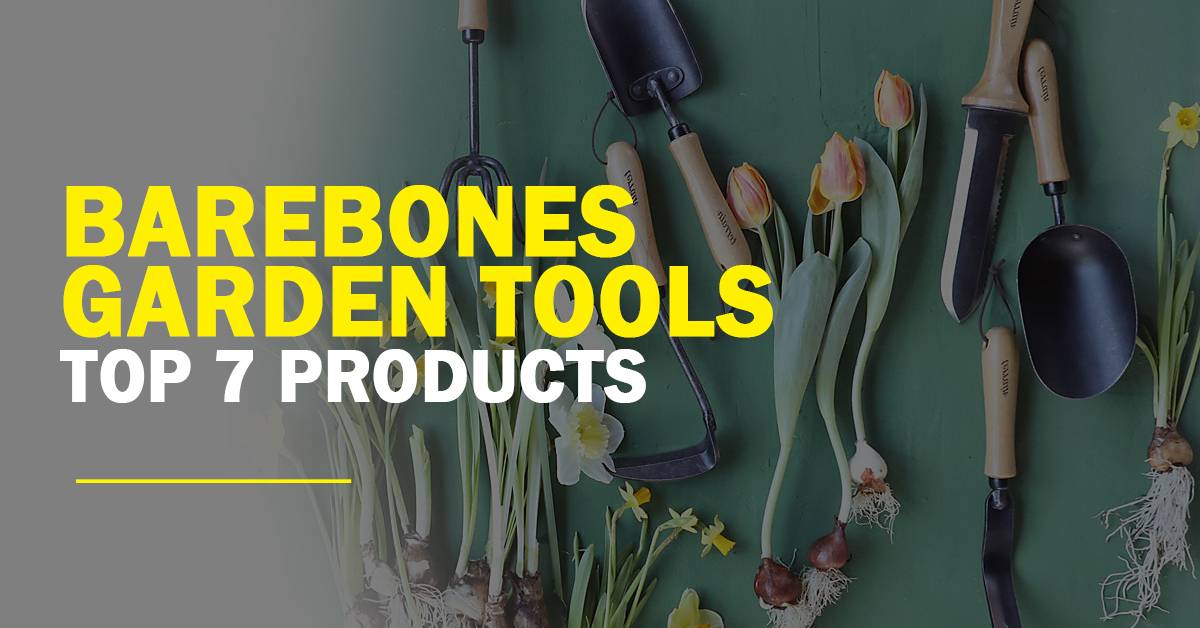
Table of Contents
ToggleAbout Barebones Garden Tools

The phrase “barebones garden tools” describes the essential, premium tools that every gardener should have on hand. A trowel is a small hand tool with a curved blade that is used for small hole digging, seedling transplantation, and soil amendment mixing. Any gardener needs this tool to be successful.
- Purner: An instrument resembling scissors called a pruner is used to shape and trim plants as well as cut off any branches that are dead or infected. The most popular kind of pruners are bypass pruners, which are made for precise cuts on living plants. Anvil pruners are better for chopping deadwood.
- Weeder: A weeder is a tool created especially to get rid of weeds in the garden. There are several varieties, such as the hand weeder, which works well for getting rid of small weeds, and the long-handled weeder, which allows you to remove weeds without bending over.
- Digging Fork: A digging fork is a long-handled implement with flat, wide tines. It is additionally known as a garden fork. It is used to lift and divide perennial plants as well as turn compost and break up compacted soil.
- Spade:Used for digging, edging, and transplanting, a spade is a long-handled tool with a flat, rectangular blade. It will be easier to complete tasks like digging holes for trees and shrubs to be planted if you use a high-quality spade.
- A gardening hoe: is a long-handled tool with a flat, sharp blade used for weeding, breaking up soil, and creating seeding furrows. There are many different types of hoes, such as the common garden hoe, stirrup hoes, and Dutch hoes.
- Rake: A rake is a long-handled tool used for raking leaves, grass clippings, and other debris as well as spreading and leveling soil. Rakes come in many different varieties, including the leaf rake, garden rake, and landscape rake.
- Watering can: To water plants, a watering can is a small, portable container with a handle and a spout. It makes it simpler to water plants without splashing or overwatering because it lets you control the water flow.
- Gardening gloves: While working in the garden, a good pair of gardening gloves will guard against cuts, scrapes, and blisters. Additionally, they can improve grip and dexterity, which makes it simpler to handle both tools and plants.
- Wheelbarrow: In the garden, heavy or bulky items like tools, soil, and compost are moved around using wheelbarrows, which are portable, single-wheeled carts. It is crucial for time savings and back stress reduction.
These fundamental gardening implements are the foundation of any gardener’s toolkit and will assist you in maintaining your garden successfully, promoting the development of healthy plants, and creating stunning outdoor spaces.
where are barebones tools made
Barebones products can be manufactured in world at various locations. According to company and thier supply chains. The word “barebones” often refers to goods that have a minimum number of features or parts, frequently acting as the user’s starting point for customization or expansion.
China, India, Taiwan, Vietnam, Mexico, and other nations renowned for their capacity for large-scale production at competitive prices may be used as manufacturing destinations. These nations are suitable for producing basic goods because they often have existing industrial infrastructure and supply linkages.
Benefits Of Barebones Garden Tools

Using simple gardening tools can really up your gardening game! These tools are so cool, every gardener needs them in their toolbox. They’re practical, efficient, and last forever. Hey there! So, like, basic gardening tools have some pretty sweet perks, ya know?
- Simple: Simple Garden tools are made to be super easy and practical, so you can use them without any hassle. You don’t have to be a pro to use these tools like a boss. They’re super easy to handle!
- Durability: Hey, if you want your gardening tools to stick around for a while and not fall apart on you, it’s a good idea to go for ones made of quality materials like stainless steel, forged iron, or solid wood.
- These tools are here to make gardening a breeze and save you some sweat and time. For instance, a well-designed spade can make physical labor-intensive tasks like digging holes for trees and shrubs much quicker and easier.
- Ergonomics: The handles of basic garden tools frequently have an ergonomic design that improves grip and comfort while lowering the risk of injury from repeated motions or extended use. Your hands, wrists, and back may suffer less from this.
- Environmentally friendly: You’ll probably use more sustainable gardening techniques if you use basic gardening tools. You can lessen your carbon footprint and reliance on electricity or gasoline by using these tools, which frequently encourage manual labor over the use of power tools.
- Cost-effective: Buying high-quality, sturdy bare-bones garden tools may cost more up front, but over time, you’ll save money on replacement costs. Additionally, compared to buying a sizable collection of specialized equipment, maintaining a smaller set of necessary tools can cost less.
- Simple garden tools are typically small and convenient to store, taking up less room in your garage or shed. They are also easy to transport. You can easily transport them to work in various areas of your garden or at community gardening events thanks to their lightweight design.
- Versatility: Many basic gardening tools are useful additions to your toolkit because they can be used for a variety of tasks. For instance, a garden hose can be used to loosen the ground, remove weeds, and dig seed-planting furrows.
Simple garden tools give gardeners a reliable, long-lasting, and green way to maintain and enhance their outdoor spaces. They are a fantastic choice for both novice and seasoned gardeners due to their adaptability and simplicity.
Features Of Barebones Garden Tools
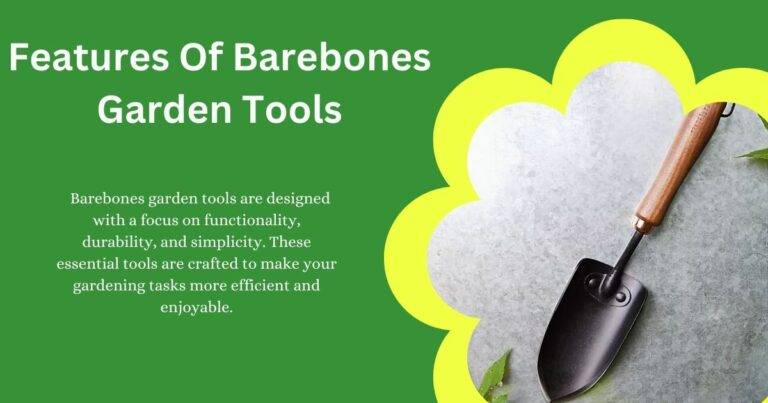
Barebones garden tools are designed with a focus on functionality, durability, and simplicity. These essential tools are crafted to make your gardening tasks more efficient and enjoyable. Here are some key features of barebones garden tools:
- High-quality materials: Barebones garden tools are typically made from premium materials such as stainless steel, forged iron, or sturdy wood. This ensures that the tools are durable and long-lasting and resistant to rust and wear.
- Ergonomic design: Many barebones garden tools have ergonomically designed handles that provide a comfortable grip and reduce the risk of strain or injury. This can help prevent discomfort and fatigue during extended periods of use.
- Multi-functionality: Barebones garden tools often serve multiple purposes, making them versatile additions to your gardening toolkit. For example, a garden hose can be used for breaking up soil, chopping up weeds, and creating furrows for planting seeds.
- Minimalist design: Barebones garden tools embrace a minimalist design philosophy, focusing on the essential functions needed for effective gardening. This makes it super easy for even newbie gardeners to use and take care of the tools.
- Environmentally friendly: By promoting manual labor over the use of power tools, barebones garden tools encourage more sustainable gardening practices. This reduces your carbon footprint and helps preserve the environment.
- Easy storage and transport: The compact and lightweight design of barebones garden tools makes them easy to store and transport. This allows you to keep your gardening workspace organized and easily take your tools with you to different areas of your garden or community gardening events.
- Aesthetic appeal: Many barebones garden tools have a classic, timeless look that adds an element of beauty and charm to your gardening toolkit. This can totally make your gardening experience more fun and might even motivate you to spend more time chillin’ in your outdoor space.
- Cost-effective: While barebones garden tools may have a higher initial cost due to their premium materials and construction, their durability means you’ll spend less on replacements in the long run Plus, these things can save you some cash by replacing a bunch of different tools.
By incorporating these features, barebones garden tools provide gardeners with a practical, efficient, and enjoyable way to maintain and improve their gardens. These plants are Hella easy to grow and work great for anyone, whether you’re a total beginner or a gardening expert.
Barebones Hori Hori Knife
A hori hori knife, also known as a soil knife or weeding knife, is a heavy, straight-edged gardening tool originating from Japan. Its name translates to “dig dig” in Japanese, which aptly describes its primary function in gardening. The blade is typically made of stainless steel and is around 7 inches long.
The hori hori knife has a concave shape, much like a trowel, which makes it ideal for digging and scooping soil. One edge of the blade is sharp for cutting and slicing through roots or opening bags of soil, while the other edge is serrated, useful for sawing through tougher material. Many hori hori knives also have a ruler engraved on the blade for planting bulbs at the correct depth.
The handle of a hori hori knife is often made of wood or a durable plastic, and it’s designed to fit comfortably in the hand for easy maneuvering.
Barebones Hori Hori knife:
- Full Stainless Steel Blade: This tool’s blade is sturdy and rust-resistant. Digging and chopping roots are no problem for it.
- Concave Shape: The blade can be used as a trowel for planting and digging.
- Dual Edge: The blade has a strong cutting edge and a serrated sawing edge.
- Measurement lines: The blade has inch lines for planting bulbs or seeds at the proper depth.
- Hardwood handles are sturdy. To aid digging, some variants have a pommel.
- Sheath: The Barebones Hori Hori knife usually comes with a sheath.
This type has a bottle opener on the handle. It’s a delightful feature that gives this useful gadget individuality.
Barebones Hori Hori Sheath
The Barebones Hori Hori knife usually has a sheath. This sheath is multipurpose:
- Safety: When not in use, the sheath protects the blade from cuts.
- Protection: It shields the blade from weather, extending tool life.
- Convenience: Sheaths frequently have a hook or clip to tie the knife to a belt or gardening apron, keeping it close at reach.
The Barebones Hori Hori knife normally comes with a leather or heavy-duty cloth sheath, as of September 2021. Some include reinforced stitching and brass rivets for robustness.
Barebones Garden Weeder

Barebones garden tools are designed with a focus on functionality, durability, and simplicity. These essential tools are crafted to make your gardening tasks more efficient and enjoyable. Here are some key features of barebones garden tools:
- High-quality materials: Barebones garden tools are typically made from premium materials such as stainless steel, forged iron, or sturdy wood. This ensures that the tools are durable and long-lasting and resistant to rust and wear.
- Ergonomic design: Many barebones garden tools have ergonomically designed handles that provide a comfortable grip and reduce the risk of strain or injury. This can help prevent discomfort and fatigue during extended periods of use.
- Multi-functionality: Barebones garden tools often serve multiple purposes, making them versatile additions to your gardening toolkit. For example, a garden hose can be used for breaking up soil, chopping up weeds, and creating furrows for planting seeds.
- Minimalist design: Barebones garden tools embrace a minimalist design philosophy, focusing on the essential functions needed for effective gardening. This makes it super easy for even newbie gardeners to use and take care of the tools.
- Environmentally friendly: By promoting manual labor over the use of power tools, barebones garden tools encourage more sustainable gardening practices. This reduces your carbon footprint and helps preserve the environment.
- Easy storage and transport: The compact and lightweight design of barebones garden tools makes them easy to store and transport. This allows you to keep your gardening workspace organized and easily take your tools with you to different areas of your garden or community gardening events.
- Aesthetic appeal: Many barebones garden tools have a classic, timeless look that adds an element of beauty and charm to your gardening toolkit. This can totally make your gardening experience more fun and might even motivate you to spend more time chillin’ in your outdoor space.
- Cost-effective: While barebones garden tools may have a higher initial cost due to their premium materials and construction, their durability means you’ll spend less on replacements in the long run Plus, these things can save you some cash by replacing a bunch of different tools.
By incorporating these features, barebones garden tools provide gardeners with a practical, efficient, and enjoyable way to maintain and improve their gardens. These plants are Hella easy to grow and work great for anyone, whether you’re a total beginner or a gardening expert.
Barebones Hori Hori Ultimate And Hori Hori Classic
The Barebones HORI HORI ULTIMATE and HORI HORI CLASSIC differ in several aspects. Here are the main differences between the two:
- Construction: The HORI HORI ULTIMATE features a stainless steel blade with a walnut handle, while the HORI HORI CLASSIC has a stainless steel blade with a wooden handle. The choice of handle material can affect the overall durability and aesthetics of the tool.
- Blade Type: The HORI HORI ULTIMATE has a serrated and straight-edge blade, providing versatility for various gardening tasks. On the other hand, the HORI HORI CLASSIC has a straight-edge blade. The inclusion of a serrated edge in the ULTIMATE version allows for cutting through tough materials like roots or twine.
- Additional Tools: The HORI HORI ULTIMATE comes with extra features such as a twine cutter and a built-in bottle opener. These additional tools can be convenient for gardeners who frequently use twine or need to open bottles while working. The HORI HORI CLASSIC does not include these extra tools.
- Sheath: The HORI HORI ULTIMATE is accompanied by a heavy-duty nylon sheath, providing protection and easy storage for the tool. In contrast, the HORI HORI CLASSIC comes with a leather sheath. The choice of sheath material may affect durability and aesthetic preference.
Maintenance of Barebones Garden Tools

Proper maintenance of your barebones garden tools is essential to ensure their longevity, functionality, and effectiveness. If you take good care of your tools, you can save some cash on replacements and have a better time gardening. Here are some tips for maintaining your barebones garden tools:
- Cleaning: After each use, clean your tools to remove dirt, sap, and plant debris. You can use a stiff brush or a damp cloth to clean metal parts and a mild soap solution for wooden handles. Make sure to dry the tools thoroughly after cleaning to prevent rust and decay.
- Sharpening: Regularly sharpen the blades of tools such as pruners, hoes, and spades to maintain their cutting efficiency. You can use a sharpening stone, file, or specialized sharpening tool, following the manufacturer’s instructions or guidelines for the specific tool.
- Rust prevention: To prevent rust, apply a light coat of oil, such as WD-40 or boiled linseed oil, to the metal parts of your tools. Wipe off any excess oil to avoid attracting dirt. Store your tools in a dry, well-ventilated area to minimize moisture exposure.
- Handle maintenance: Inspect wooden handles for cracks, splinters, or signs of decay. Sand down any rough spots to prevent injury and maintain a comfortable grip. Treat wooden handles with linseed oil or another wood preservative to protect them from moisture and extend their lifespan.
- Tighten loose parts: Check for any loose screws, bolts, or fasteners on your tools, and tighten them as needed. This will ensure your tools remain stable and safe to use.
- Lubrication: Lubricate moving parts on tools like pruners and shears with a few drops of oil to maintain smooth operation and prevent rust. Be sure to wipe off excess oil to prevent dirt buildup.
- Regular inspection: Periodically inspect your tools for signs of wear, damage, or potential failure. Address any issues promptly to prevent accidents or further damage.
- Proper storage: Just stash your tools in a dry and airy spot, like a shed or garage. Hang tools on hooks or pegs to keep them off the ground and prevent moisture damage. Keep cutting tools, like pruners and shears, in a protective sheath or case when not in use.
By following these maintenance tips, you can keep your barebones garden tools in top condition, ensuring their effectiveness and durability for years to come. Proper tool care is an essential part of successful and enjoyable gardening.
Buying Guides of Barebones Garden Tools

When buying barebones garden tools, it’s important to consider factors such as quality, durability, ergonomics, and functionality. Here’s a buying guide to help you choose the right tools for your gardening needs:
- Determine your needs: Before purchasing any tools, assess your gardening needs and the tasks you frequently perform. This will help you prioritize which tools to invest in and ensure you’re not spending money on tools you won’t use.
- Material quality: Look for tools made from high-quality materials, such as stainless steel, forged iron, or sturdy wood. These materials are more durable and resistant to rust and wear, ensuring a longer lifespan for your tools.
- Ergonomics: Consider tools with ergonomically designed handles that provide a comfortable grip and reduce strain on your hands, wrists, and back. This is especially important for tasks that require repetitive motions or prolonged use.
- Multi-functionality: Opt for tools that can serve multiple purposes, as this will provide more versatility and save you money on specialized equipment. For example, a garden hose can be used for breaking up soil, chopping up weeds, and creating furrows for planting seeds.
- Weight and size: Choose tools that are lightweight and appropriately sized for your needs. Heavier tools can cause fatigue and strain, while tools that are too large or too small may be difficult to use effectively.
- Brand reputation: Do some research on the brands available in the market and read reviews from other gardeners. Reputable brands are more likely to offer high-quality, durable tools backed by good customer service.
- Warranty and customer support: Check if the tools come with a warranty or guarantee, which can provide peace of mind and protection against defects or poor craftsmanship. Additionally, consider the manufacturer’s customer support, as this can be helpful if you encounter issues with your tools.
- Budget: Determine a budget for your garden tool purchases and prioritize which tools are most important to you. Investing in high-quality, durable tools may have a higher initial cost, but their longevity will save you money on replacements in the long run.
- Local availability: Check if the tools you’re interested in are available at local gardening stores or nurseries. Shopping locally can support small businesses and allows you to examine the tools in person before purchasing.
- Online options: If local options are limited, consider shopping online. Many online retailers offer a wide selection of garden tools, often at competitive prices. Make sure to read reviews, check return policies, and compare shipping costs before making a purchase.
By following this buying guide, you can make informed decisions when purchasing barebones garden tools, ensuring you have the right tools to maintain and improve your garden effectively and enjoyably.
Top 7 Best Products Of Barebones
1. Barebones | Japanese Pruner

Features
- VINTAGE-INSPIRED | Japanese Design
- DURABLE | Steel Construction
- MULTI-PURPOSE | Staple for Indoor and Outdoor Gardening
- COMFORTABLE | Unmatched dexterity and Utility
- LASTING STAPLE | Classic Copper Accents
2. Barebones Hori Hori Garden Tool
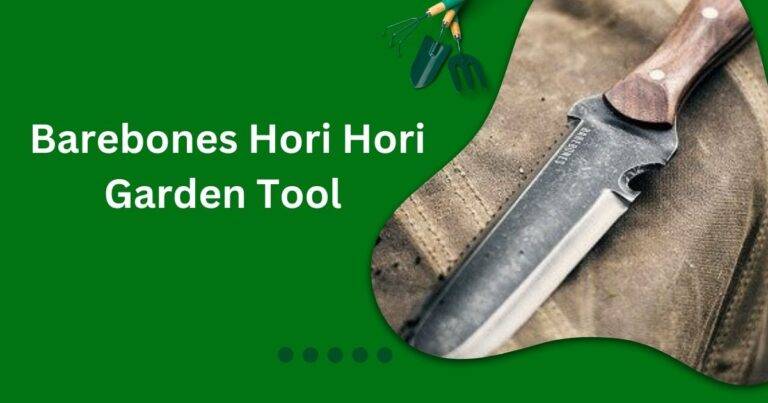
Features
- Gathering bag has multi-way straps to provide a multitude of ways to hold and handle the gathering bag
- Paraffin waxed canvas makes The Gathering Bag both water-friendly and non-absorbent
- Hori Hori Ultimate is designed for left and right-handed users; the handle features a smooth and polished walnut construction that provides a comfortable grip and an attractive aesthetic
3. Barebones Living Garden Tool | Spade
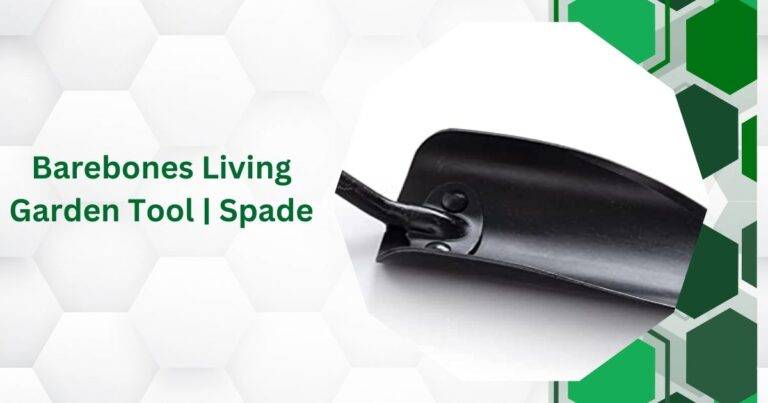
Features
- Rust-resistant
- Heat-treated stainless steel
- Ergonomic bamboo handle
- Blade can be resharpened as needed
- Ergonomic
4. Barebones | Walnut Square Hoe
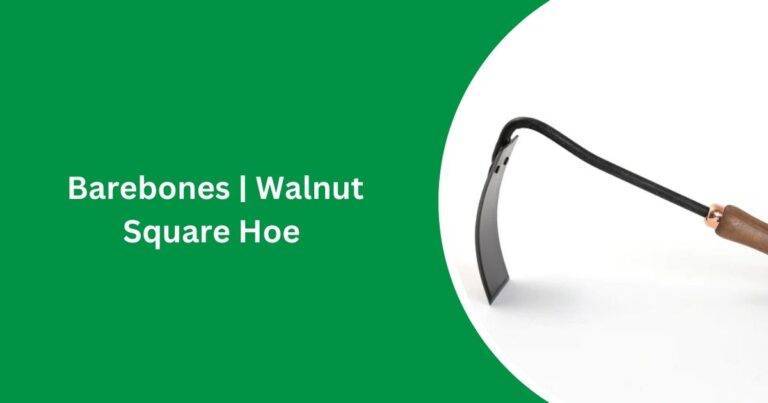
Features
- ERGONOMIC DESIGN | Comfortable For All Day Use
- LONG LASTING | Heat Treated Stainless Steel Blades, Bamboo Handles, and Rust Resistance
- COMFORTABLE | Ambidextrous Grip for Harvesting Quickly
- GARDENER FRIENDLY | For Every Outdoor and Gardening Enthusiast
5. Barebones - Walnut Handle
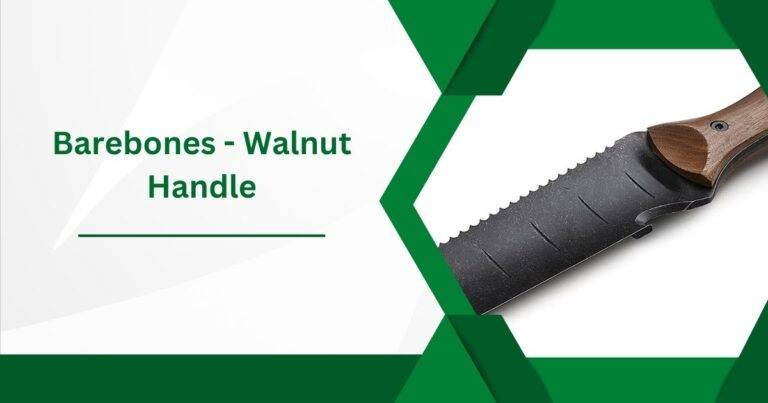
Features
- STAINLESS STEEL | 4CR13 stainless steel double-edged blade through tang (straight and serrated)
- AMBIDEXTROUS USE | Walnut handle with a flat pommel base
- CONCAVE BLADE | With 1-inch markings for easy use and measuring
- ADDITIONAL FEATURES | Twine cutter and bottle opener
6. Barebones Walnut Scissors, Large
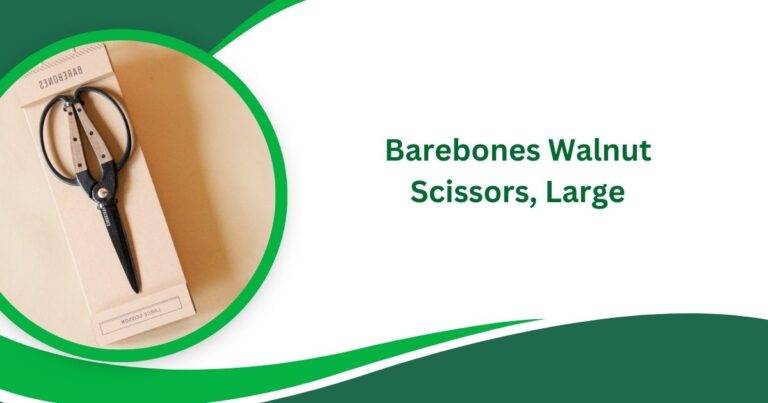
Features
- AMBIDEXTROUS: Dual Grip Usage
- MULTIPURPOSE: 4 Inch Blades
- COMFORTABLE: Wide Handle to Provide Comfort For All Sizes
- RUST RESISTANT: Heat-treated Stainless Steel Blades
- DURABLE: Blades Can Be Resharpened As Needed
7. Barebones Japanese NATA Tool

Features
- A nod towards the timeless design of Japanese implements, the Nata Hatchet is as handsome as it is functional.
- The extra-long edge makes it a go-to for pruning, debarking, and removing limbs.
- Made of 900D polyester with an interior liner, it weathers real-world use while protecting the blade from dulling.
- Stainless steel belt clip supports easy carrying and accessibility, while the strong handle strap restricts the blade from slipping or moving.
FAQ
Most frequent questions and answers
Barebones products can be manufactured in world at various locations. According to company and thier supply chains. The word “barebones” often refers to goods that have a minimum number of features or parts, frequently acting as the user’s starting point for customization or expansion.
The most popular garden tool varies depending on the region and individual preferences, but one tool that is widely used and considered essential for many gardeners is the garden trowel. A garden trowel is a small handheld tool with a pointed blade used for digging, planting, and transferring soil.
- Stainless Steel: Stainless steel is a durable and rust-resistant material commonly used for gardening tools. It is strong, easy to clean, and maintains its sharpness over time. Stainless steel tools are known for their longevity and ability to withstand exposure to moisture and soil.
- Carbon Steel: Carbon steel is another common choice for gardening tools. It is strong, holds a sharp edge well, and is generally less expensive than stainless steel.
- Aluminum: Aluminum is lightweight, making it a preferred choice for tools that require frequent use or prolonged periods of handling. It is resistant to rust and typically more affordable than stainless steel or carbon steel.
- Fiskars: Fiskars is a well-established brand that offers a wide range of garden tools known for their durability and ergonomic designs. They are known for their pruners, loppers, shears, and axes.
- Corona: Corona is recognized for its professional-grade gardening tools. They manufacture a variety of tools, including pruners, loppers, saws, and shears, that are known for their quality and performance.
- Spear & Jackson: Spear & Jackson is a British brand that has been producing garden tools for over 250 years. They are known for their extensive range of tools, including hand tools, digging tools, cutting tools, and more.

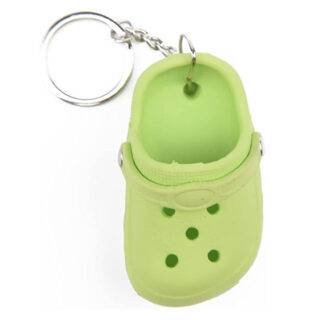

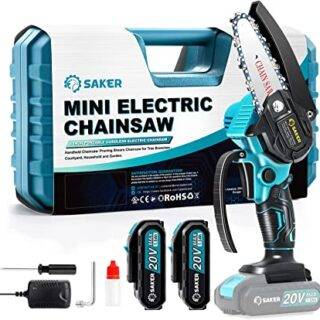
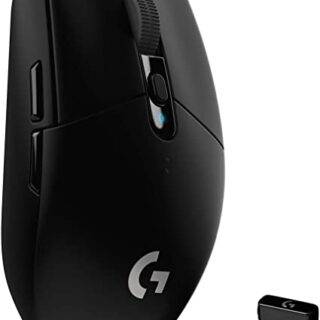
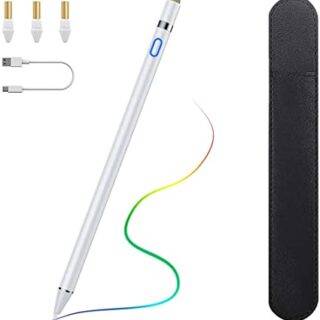

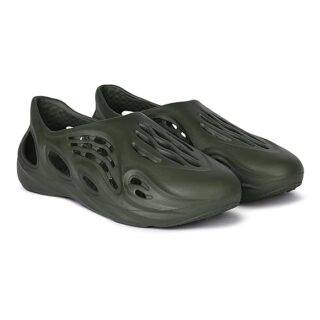


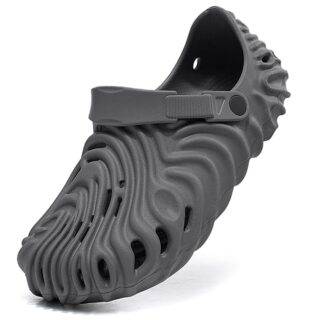
Leave a Reply